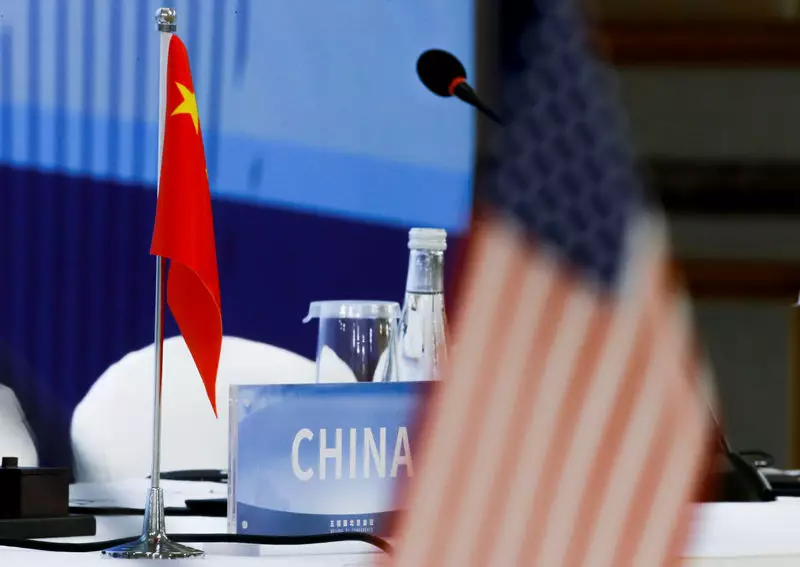Emerging markets (EMs) are highly susceptible to global political shifts, particularly in the context of US elections. Recent analyses by Bank of America (BofA) shed light on the intricate dynamics influencing these economies in the wake of electoral results. This article will explore the implications of potential trade tensions and currency adjustments, particularly focusing on a possible renewed US-China trade conflict, the positioning of investors, and the broader economic ramifications on EMs.
In the lead-up to the US elections, fears of a re-escalation of the trade war between the United States and China, especially if Donald Trump emerges victorious, have surfaced as a major concern for investors. BofA strategists David Hauner and Claudio Piron highlight that if trade war fears materialize, significant outflows from EM funds could ensue. The concern is not merely academic; a contingent of investors has expressed a lack of conviction regarding their positioning, leading to inadequate preparation for a potentially adverse trade environment.
Investors appear to be maintaining low-risk profiles but have not sufficiently positioned themselves for the significant changes a trade war could induce. The strategists emphasize the imperative need for investors to actively consider the worst-case scenario regarding trade relationships, especially as just moderate tariff implementations could considerably impact the currency stability of emerging markets.
The economic landscape for EMs can shift dramatically depending on US dollar strength and interest rates. BofA warns that under conservative estimates, the implications of a trade war can severely affect the foreign exchange equilibrium rates of EM currencies, particularly in regions like Europe and North Asia. Such regions are already constrained by their limited fiscal capacities, meaning they may struggle to stimulate their economies in response to external shocks.
In contrast, countries like Brazil, which are already fiscally vulnerable, could find themselves under even greater strain. A reinforcing cycle of a stronger US dollar and rising interest rates could compound these problems, particularly as the valuations of external debts increase. The overarching trend suggests that emerging markets that are highly trade-oriented may find themselves lagging, caught between external pressures and domestic vulnerabilities.
Investment Trust and Market Dynamics
BofA’s report indicates a systemic caution among investors, noting that many remain cautious and hesitant to make aggressive moves in light of potential trade dislocations. This hesitation is legitimate, as traders with a conservative stance of selling US dollar rallies and purchasing dips in EM currencies may find proactive strategies inadequate if the market conditions take a sharp turn.
However, amidst these challenges, BofA sees potential prospects within specific markets that exhibit strong fiscal foundations and inflation credibility. As the risk of trade tensions looms, these markets may benefit from rate cuts when growth concerns overshadow currency pressures.
China’s response to any renewed tension with the US is particularly crucial, as its economic policies will likely influence the trajectory of not just its economy but also that of its neighboring nations in Asia. A key focal point is the stability of the Chinese yuan; should it fall against the US dollar beyond 7.30, Chinese policymakers may prioritize maintaining currency stability, which could have repercussions across Asian markets.
Furthermore, smaller economies in Asia are poised to face inflationary pressures due to potential US tariffs combined with reduced trade volumes. The unintended consequence of US tariffs might result in disinflation, whereby the economic strains could prompt Asian central banks to adopt looser monetary policy, even in the face of a robust US dollar.
Future Outlook: Balancing Risks and Opportunities
Bank of America projects that currencies in North-East Asia, including the yuan, South Korean won, and Taiwanese dollar might underperform compared to their South-East Asian counterparts amid these conditions. The Singapore dollar stands as a notable exception, demonstrating resilience attributable to its robust policy credibility and investment influx. However, ongoing global protectionism could still erode this strength over time.
The intersection between the US electoral outcomes and emerging markets is fraught with uncertainties. Trade tensions and currency fluctuations will dictate the health of these economies, leaving investors with substantial risks to navigate. Yet, within this landscape lies an opportunity for those who can strategically position themselves amid the volatility. The evolving global trade dynamics underline the importance of vigilant and informed investment strategies as the world watches the unfolding ramifications of US political shifts.


Leave a Reply